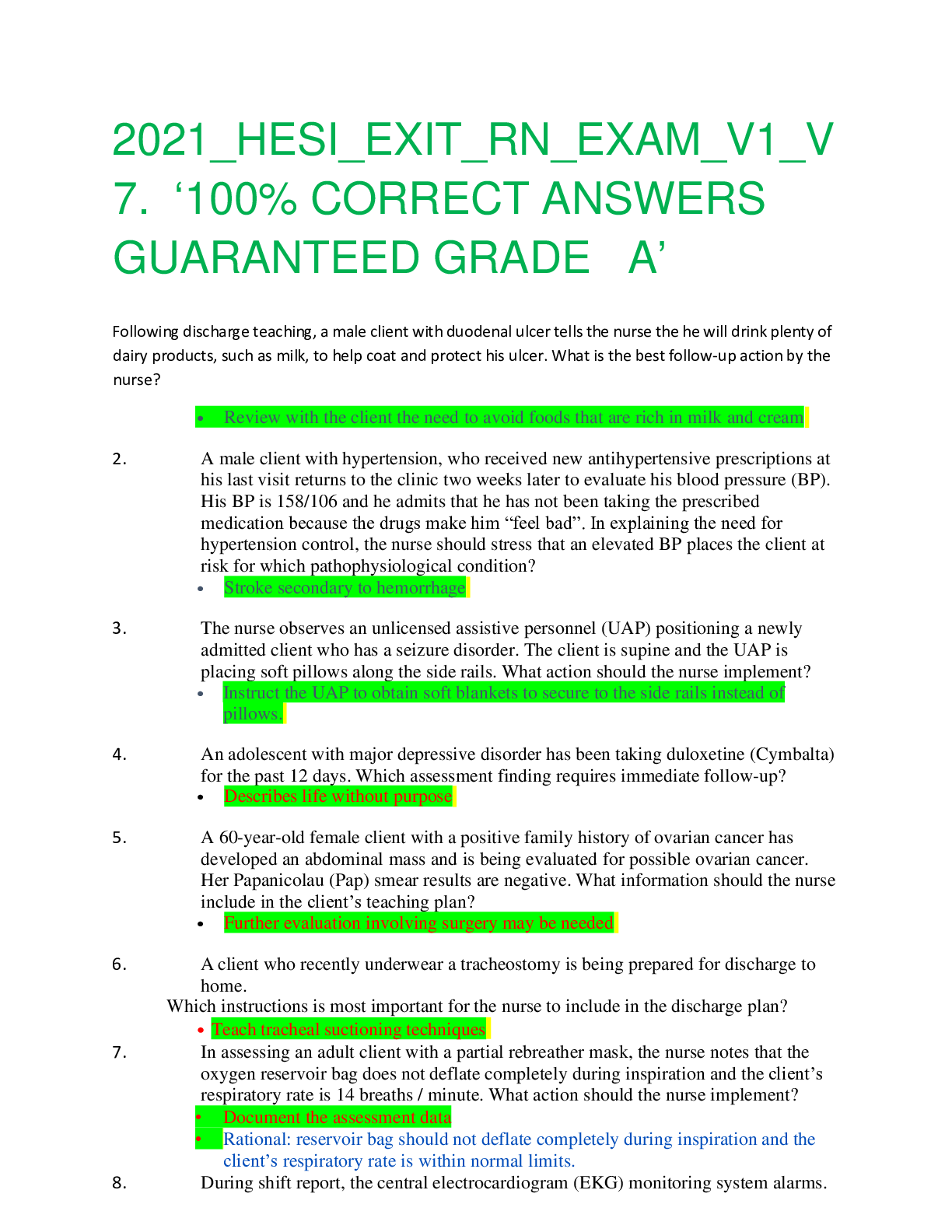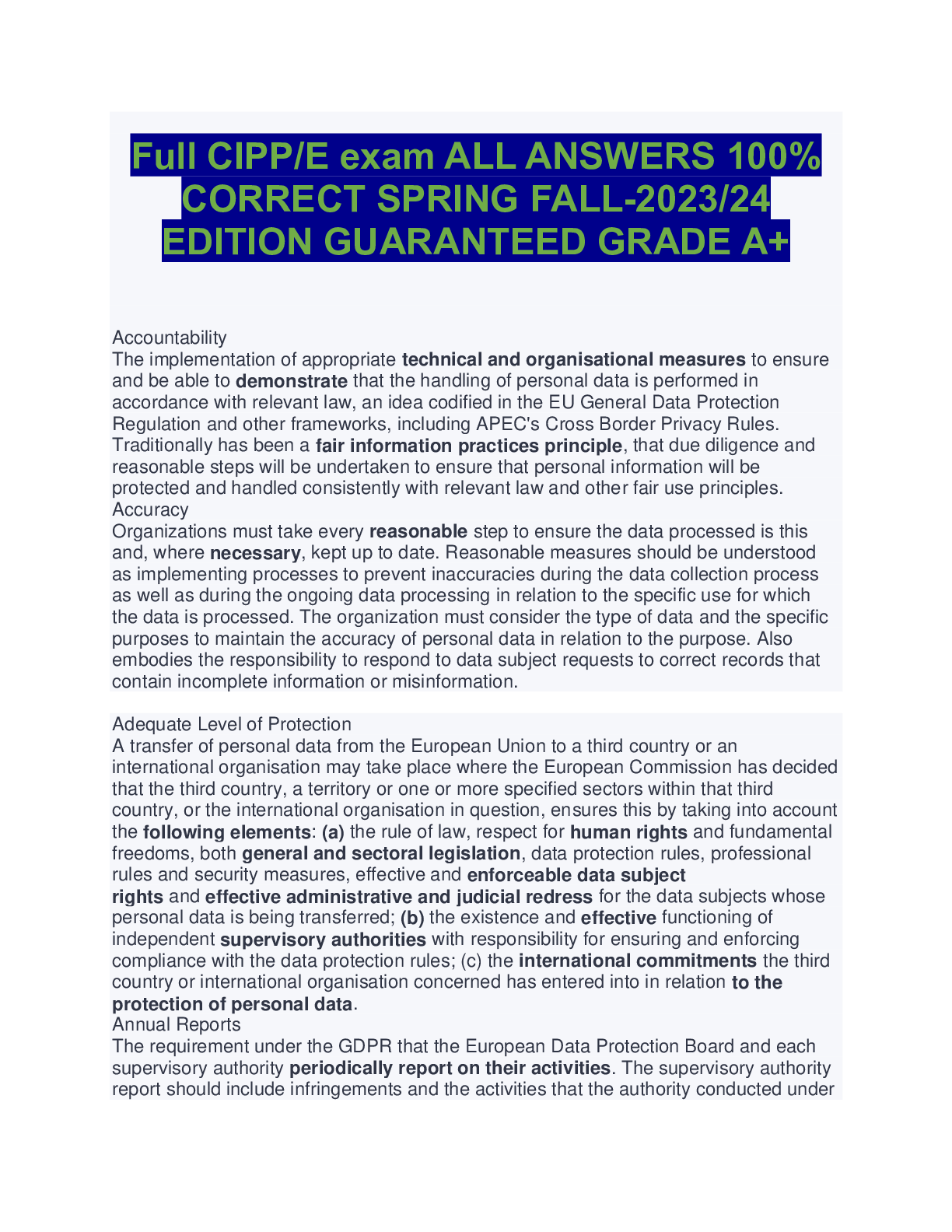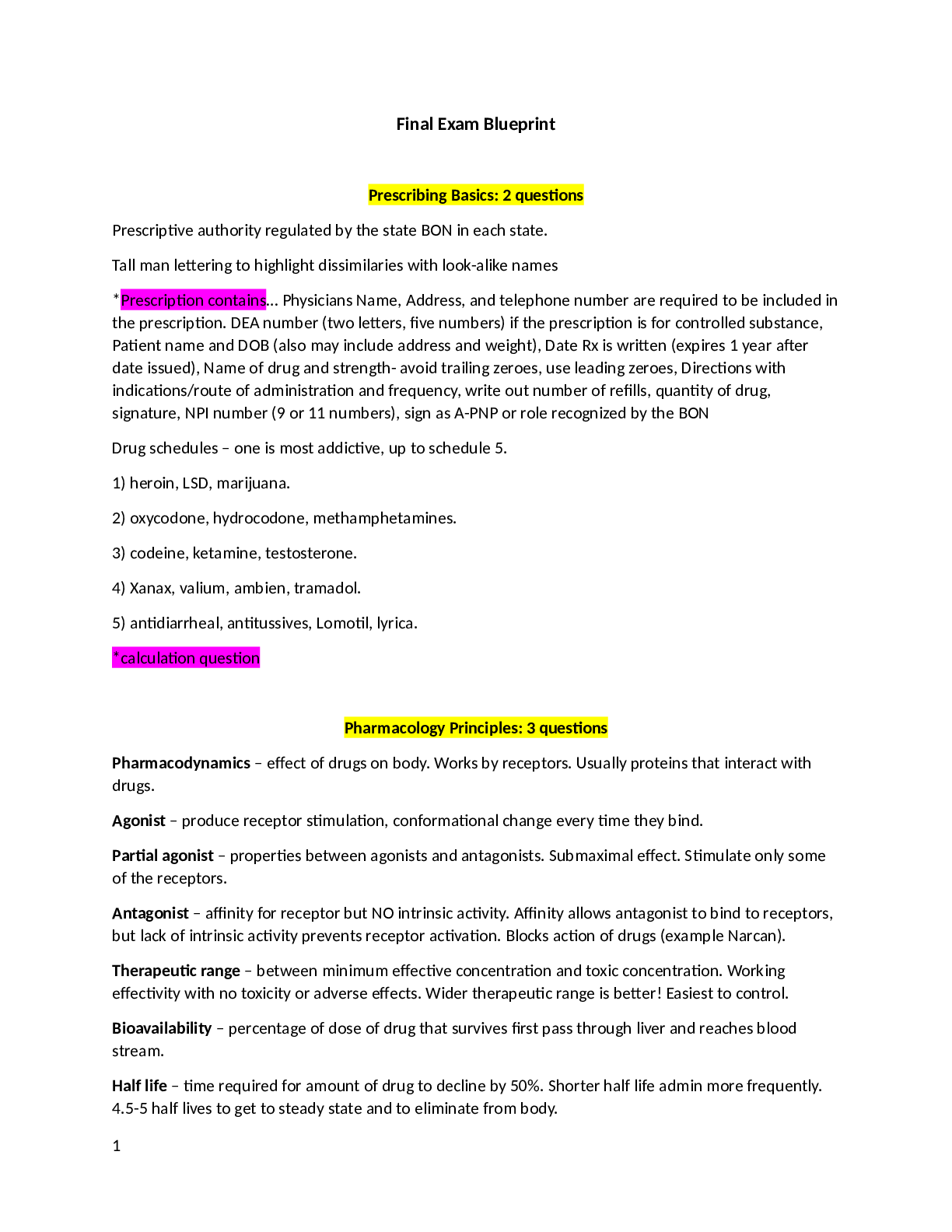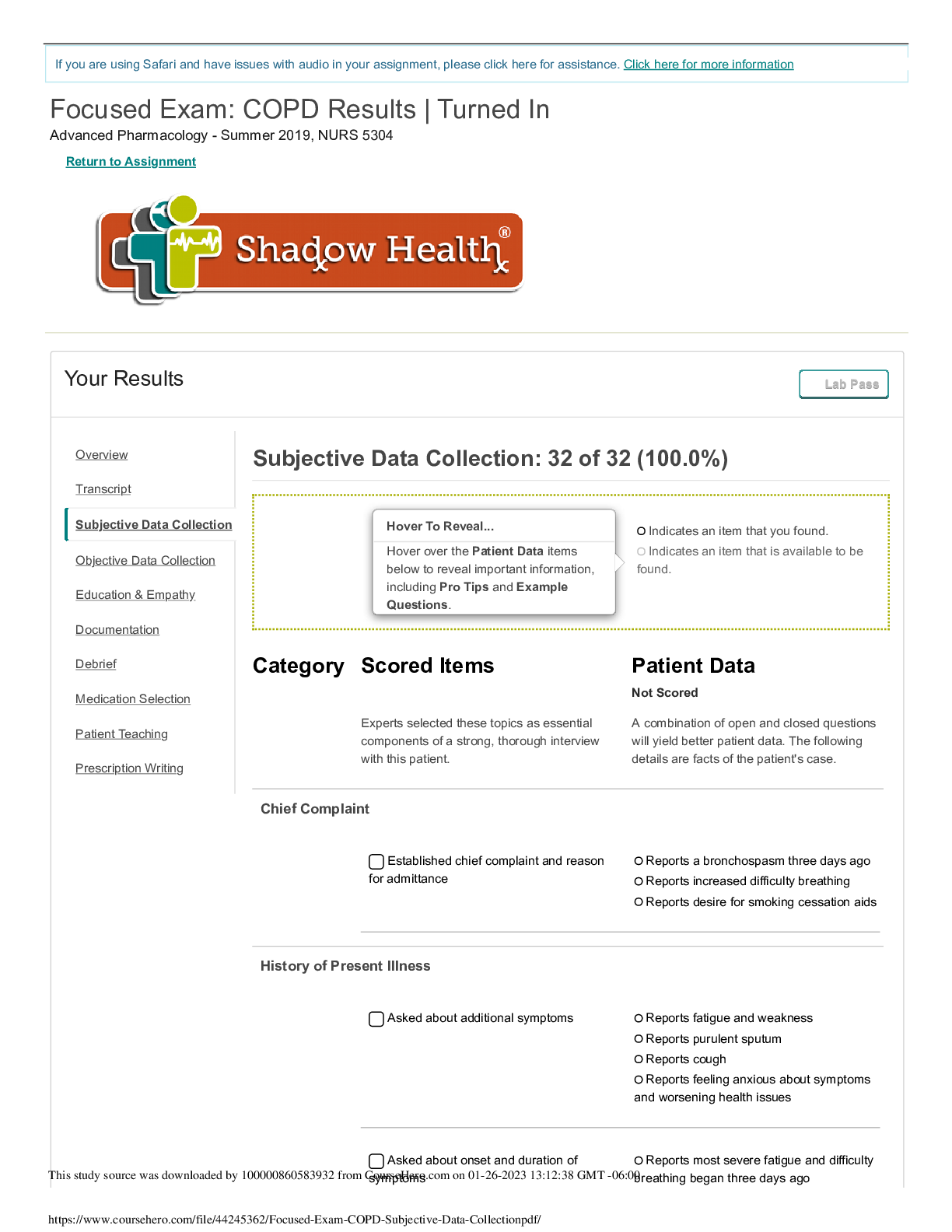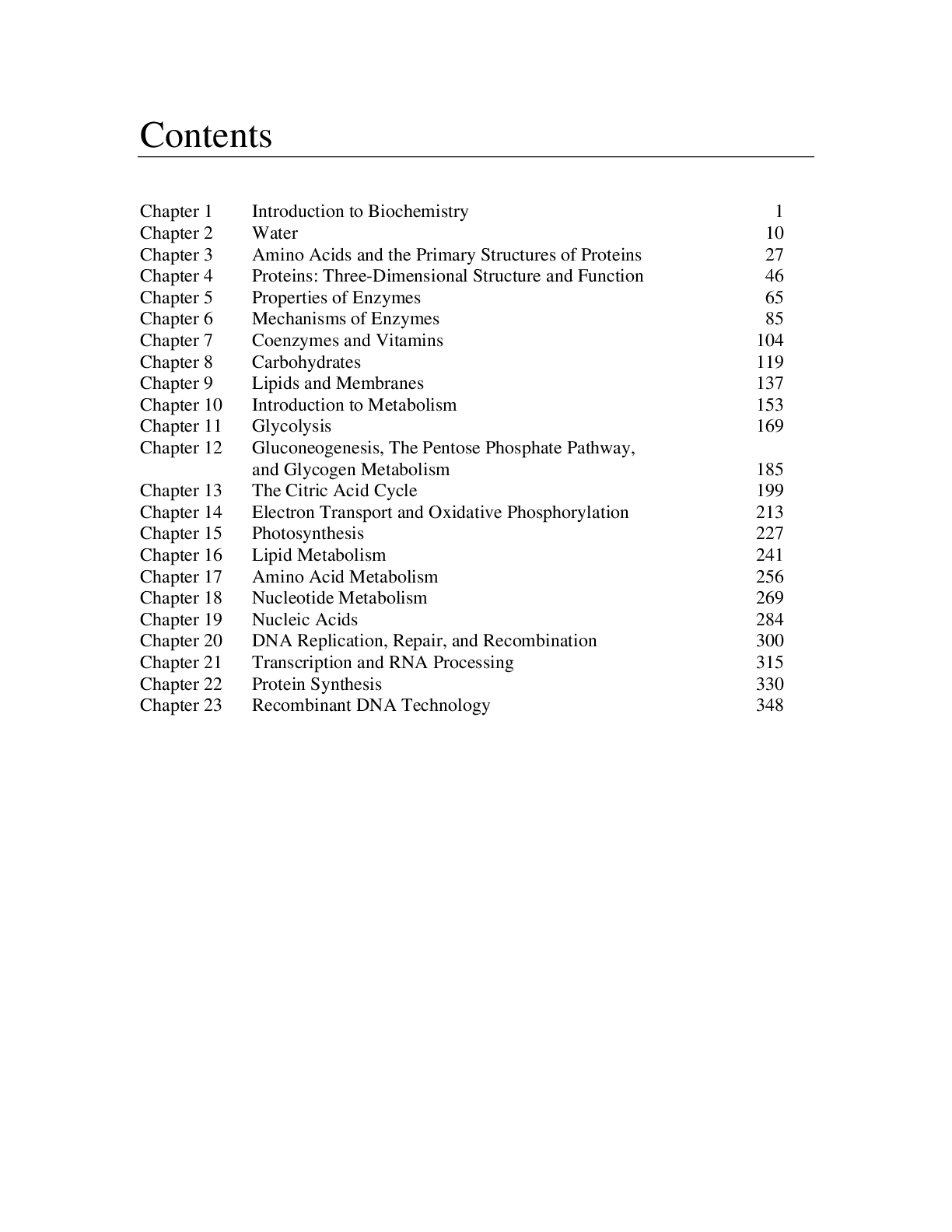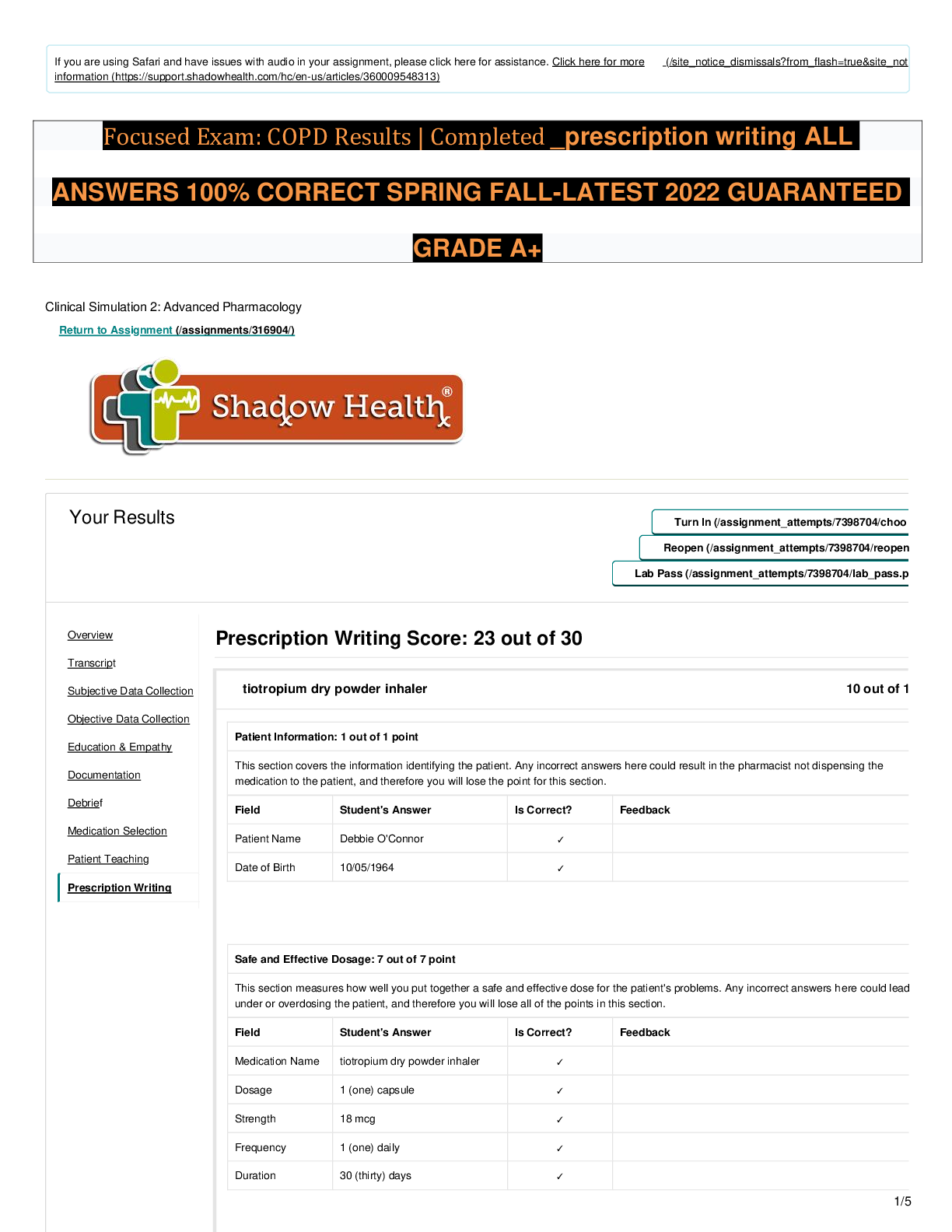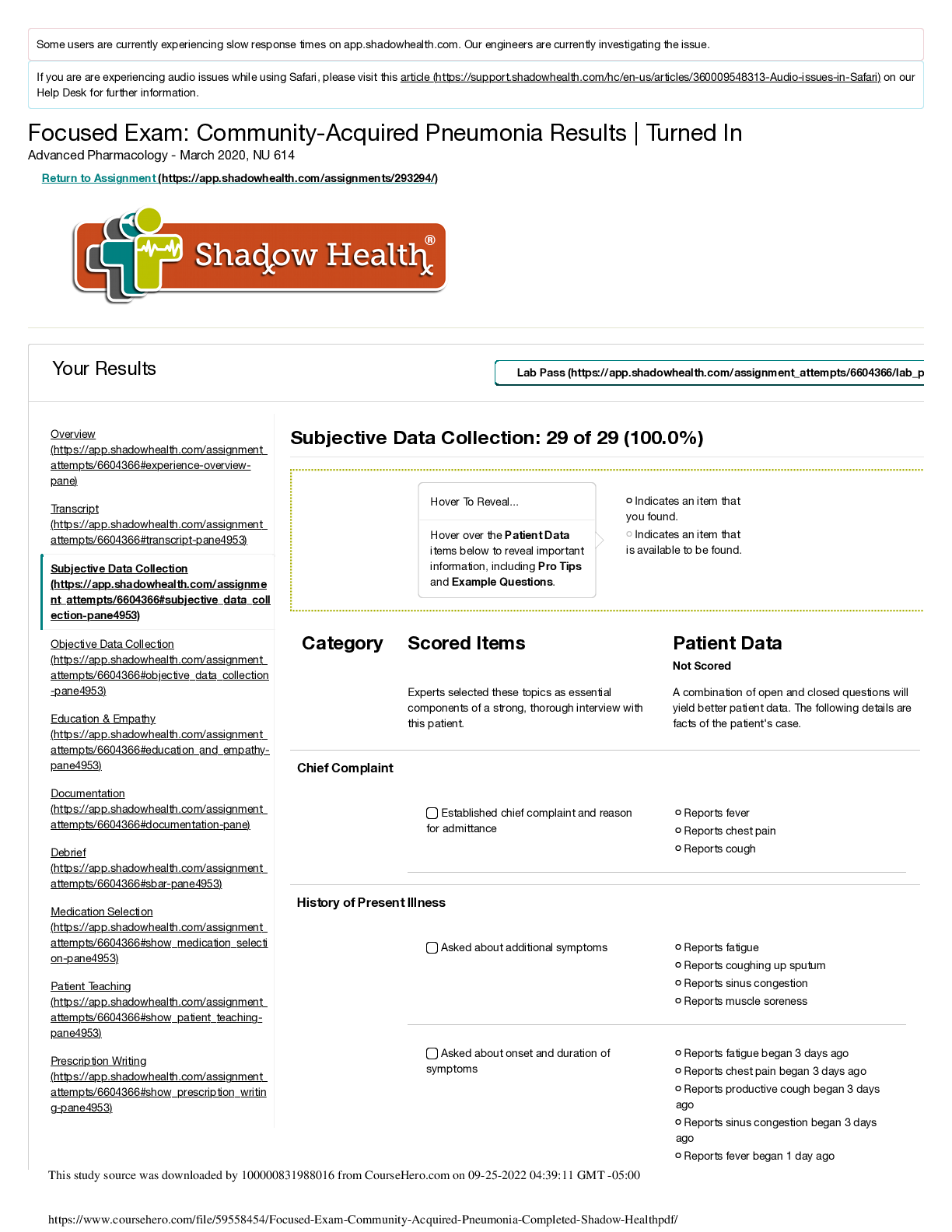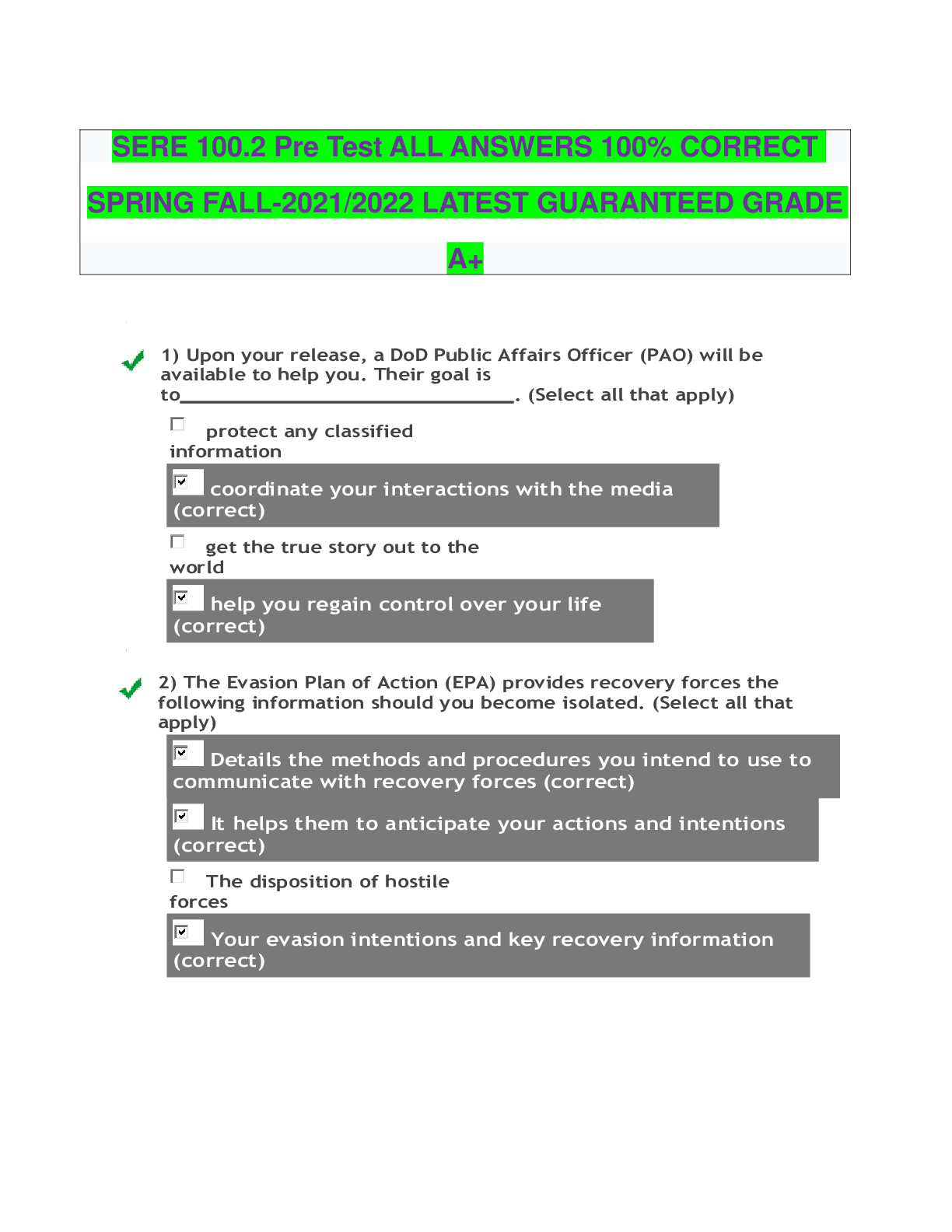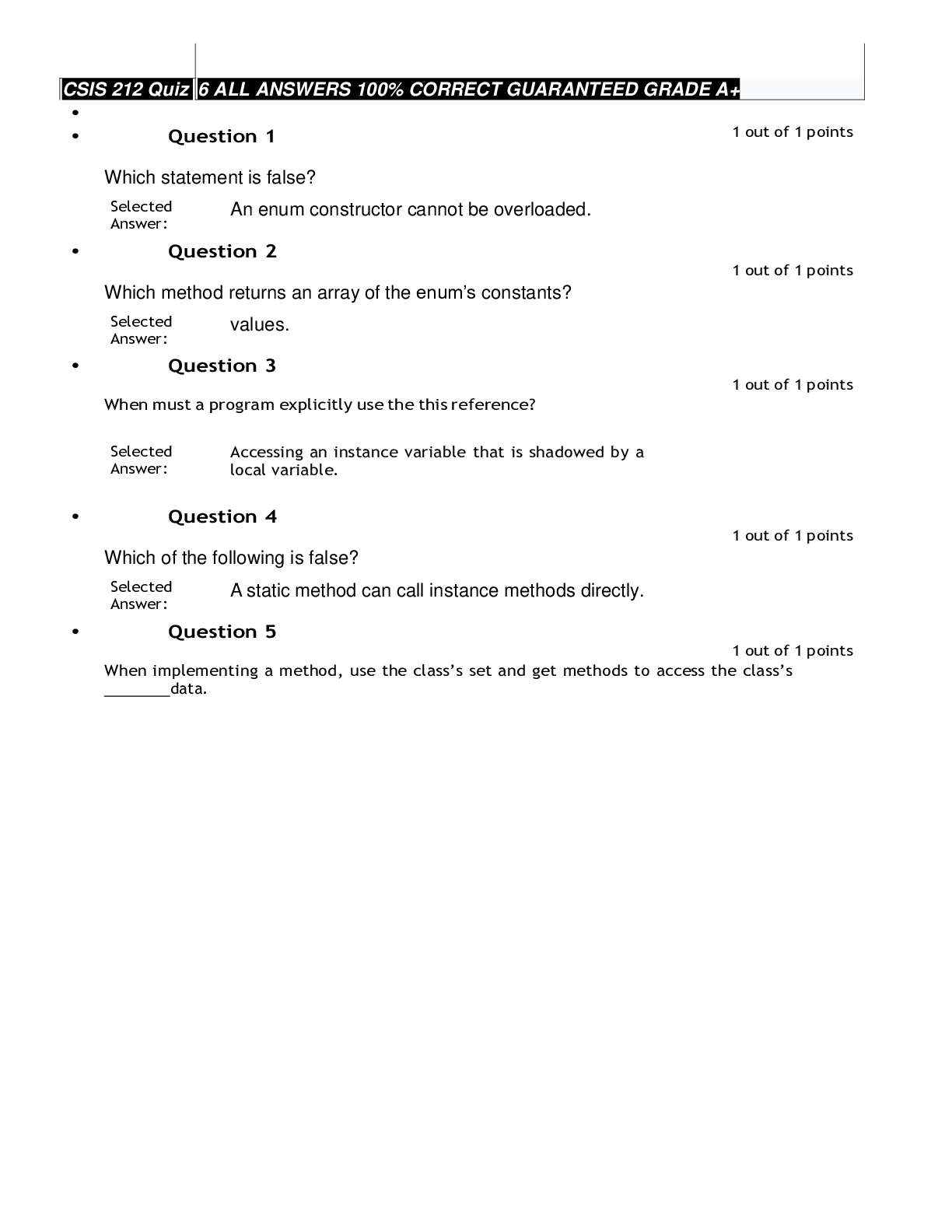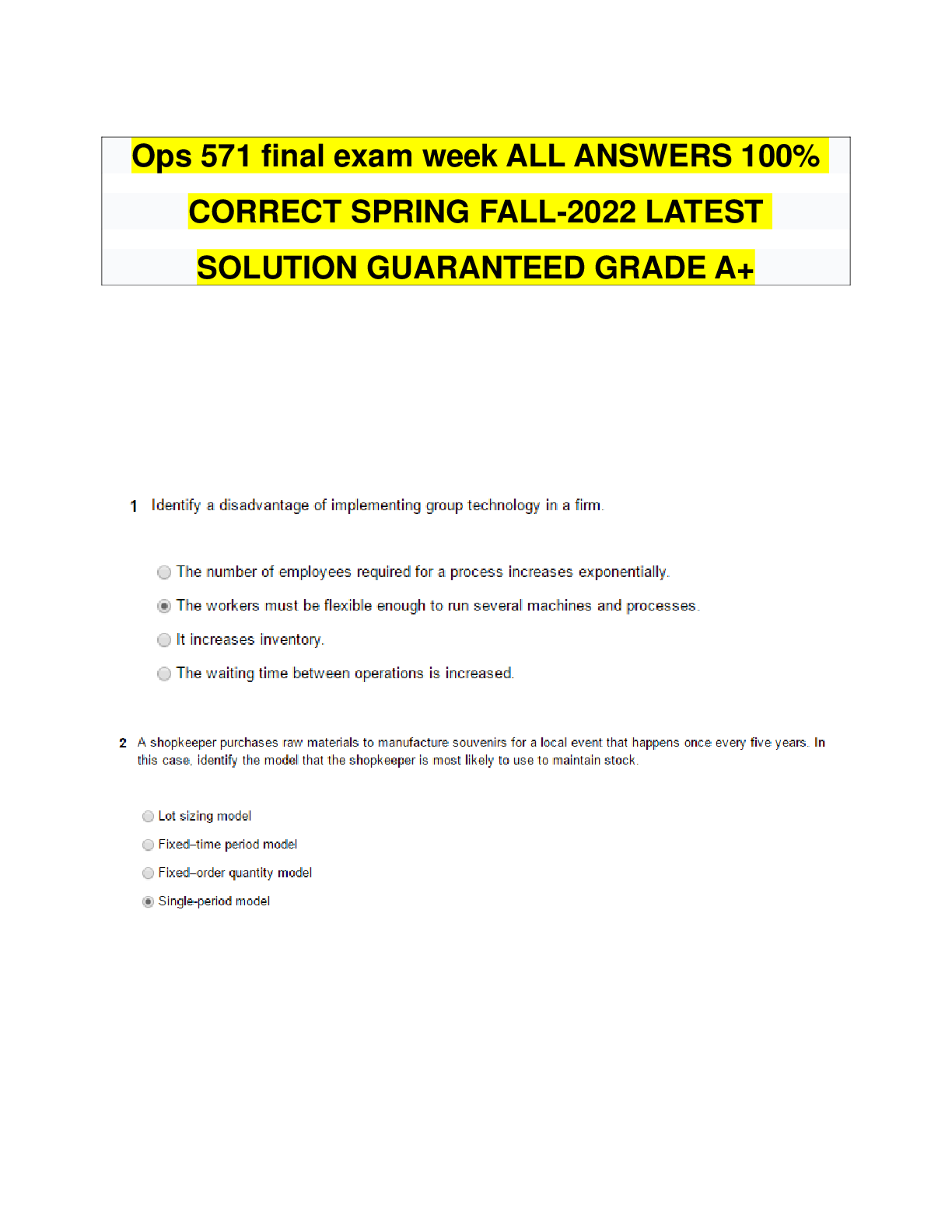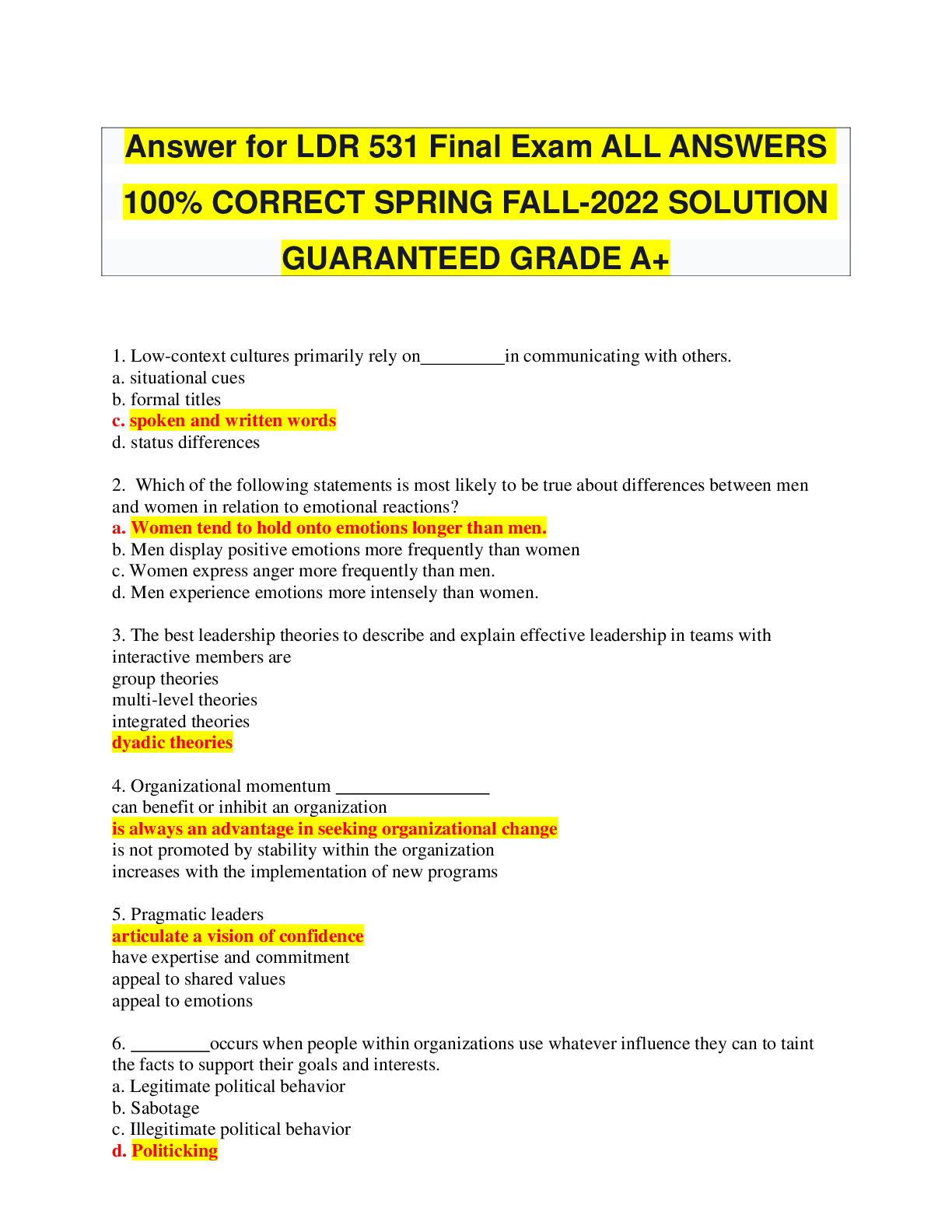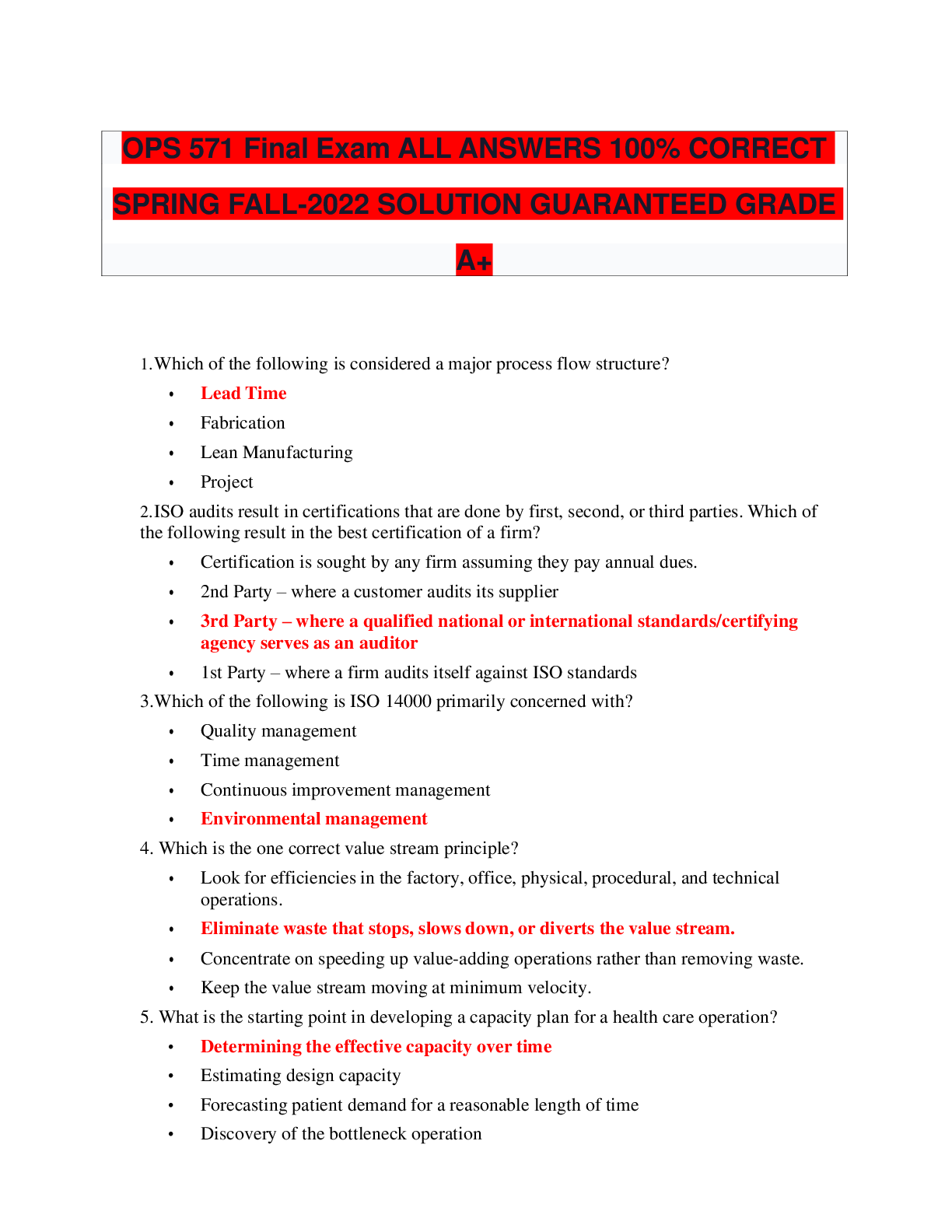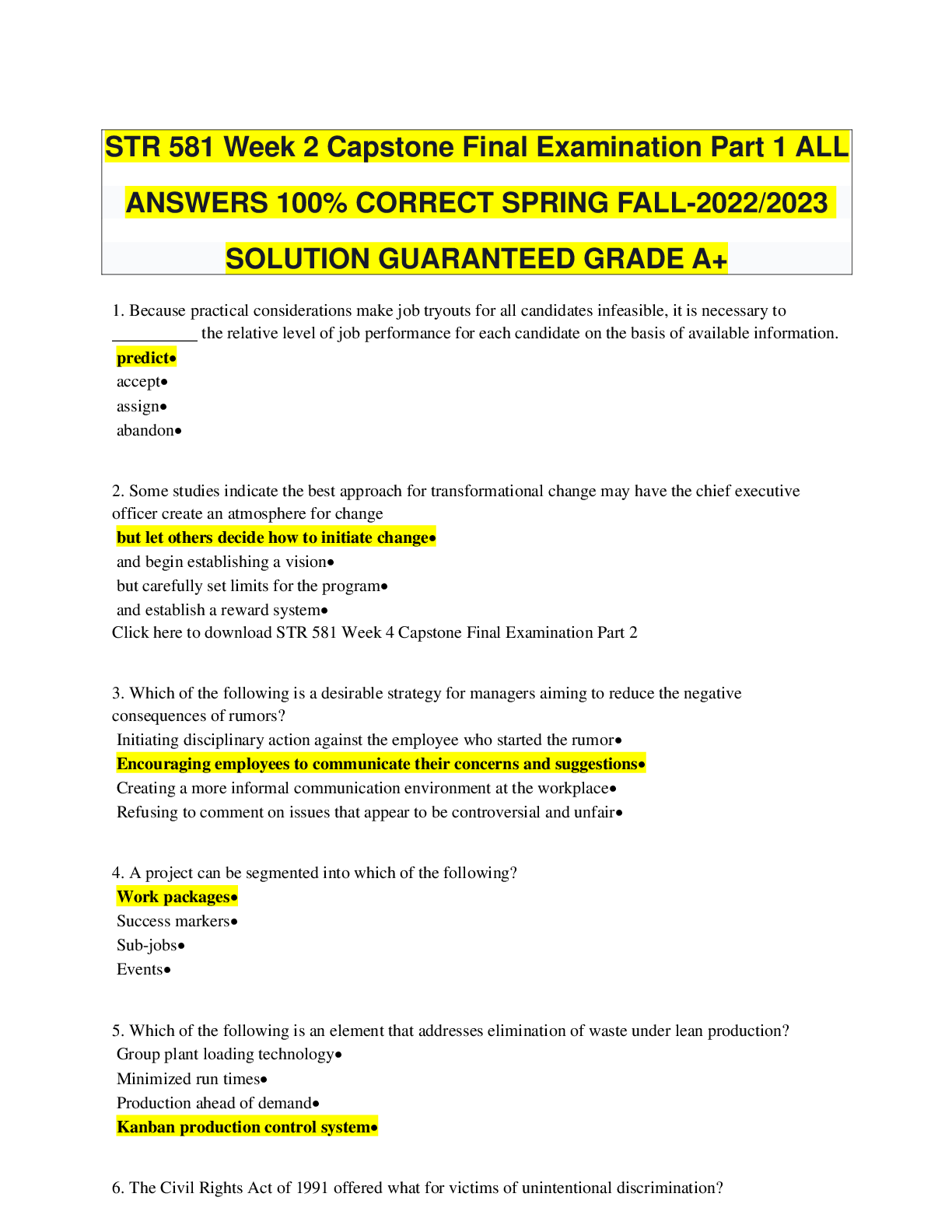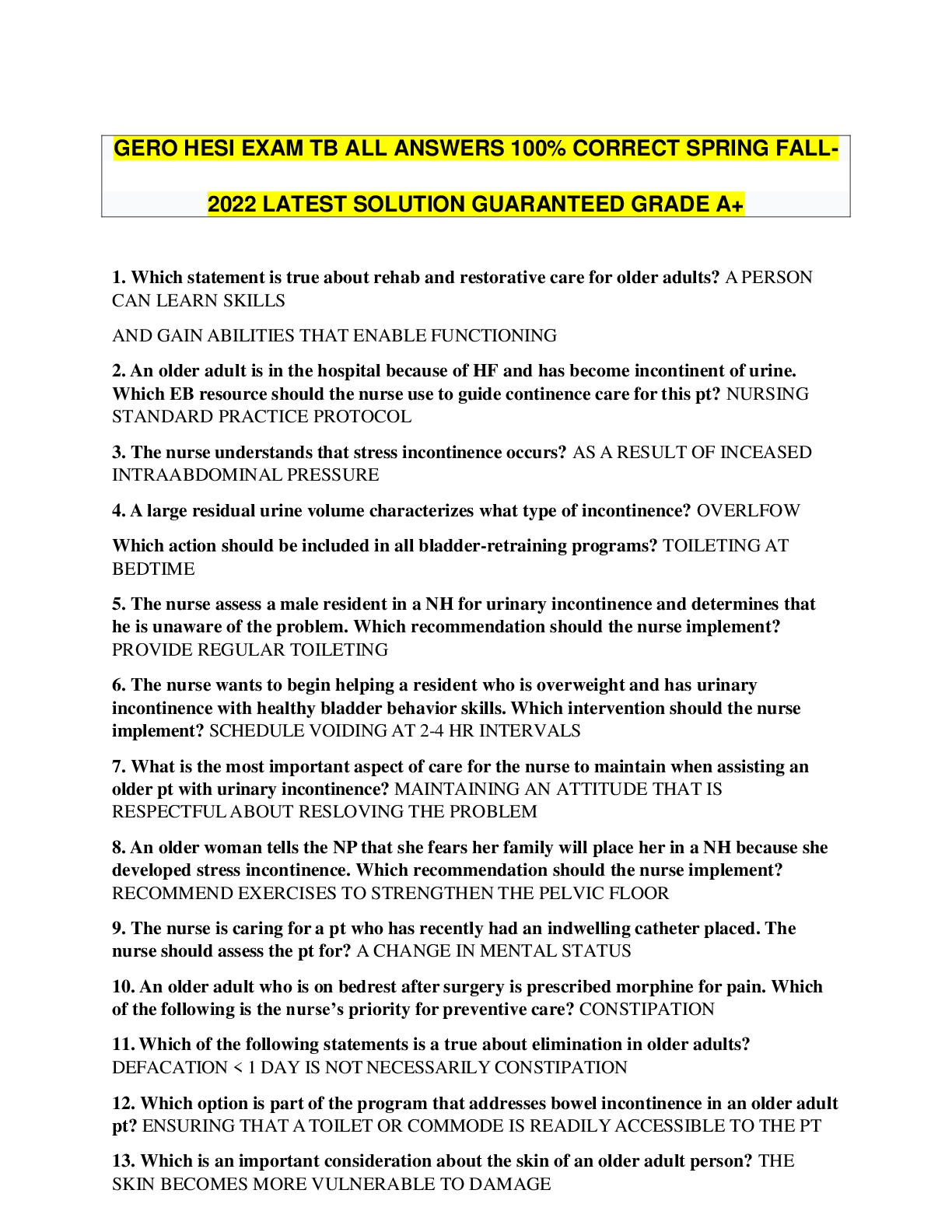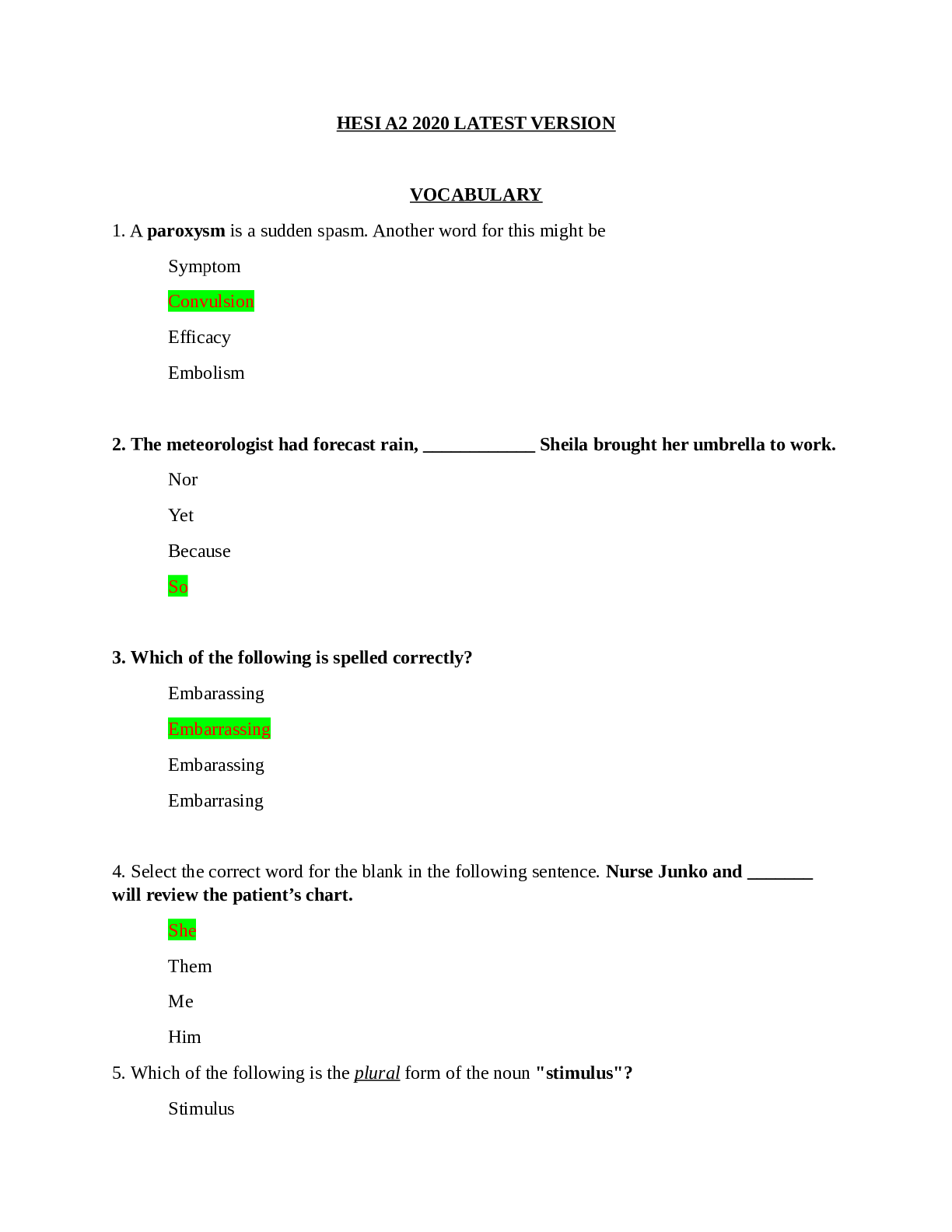Child Learning and Development > EXAM > Emergent Literacy for VPK Instructors ALL ANSWERS ASURED GRADE A+ 100% CORRECT SPRING FALL- 2022/202 (All)
Emergent Literacy for VPK Instructors ALL ANSWERS ASURED GRADE A+ 100% CORRECT SPRING FALL- 2022/2023 SOLUTION
Document Content and Description Below
Emergent literacy - comprises the essential skills, knowledge, and attitudes that prepare children for the formal reading and writing instruction they will encounter in kindergarten and first grade.... are the basic building blocks of learning to read and write How do children acquire literacy skills? - Children acquire emergent literacy skills through their interactions with adults and their environments. While these skills begin to develop in early infancy, preschool programs provide powerful opportunities for young children who might not otherwise have the opportunity to master these essential building blocks that contribute to later success in school. effective preschool programs can prepare all children for success in school and in becoming readers and writers, no matter their background? t/f - true what is the goal of this training? - to give you specific strategies and tools for preparing all children to experience early success in learning to read and write. What are the three areas of emergent literacy skills that are related to later reading and writing achievement and are directly tied to how well children will be reading by the end of first grade? - oral language, print knowledge, and phonological awareness Research shows that children starting kindergarten who are behind in essential emergent literacy skills are likely to stay behind throughout their school years. t/f - True How can you extend children's language in a group setting? - One way is to improve whole group conversations by making sure children do most of the talking and that many children participate. Try to open a group conversation by suggesting a topic and pausing to listen to children's responses. You could try saying something like, "I noticed how foggy it was this morning on the way to school" and pausing to encourage children to respond to your comment. A comment encourages children to think and respond in a way that is different from responding to questions that require answers. As children contribute to the conversation, try saying things like, "Hmmmm," or "That's interesting,"or just nodding your head and then looking to another child for a response. This helps to keep the conversation going and open to all children. Another way to extend children's language is through explicit instruction. Some children have a hard time learning new words or sentence structures without explicit teaching. You may want to incorporate explicit instruction and practice when you notice children who are not demonstrating some of the language competencies listed in the prekindergarten standards. A pitfall to beware: teachers have a tendency to do too much of the talking. Monitor yourself when you sit and stay, or lead open conversation with the group. Make sure children do more of the talking than you do. explicit instruction - instruction that is targeted at the development of a specific skill. A way to encourage the child to use language - - following the lead of a child Talking with children - - one of the most important ways to enhance children's language development One way children acquire language - - extensive exposure to good models of language use What the focus of your conversation with children should be on - - the meaning of what a child is saying What can you do to encourage a child to talk more? - There are many ways you can encourage children to talk more when you sit and stay. One of the most effective ways is simply showing a genuine interest in what they have to say. More specifically, if you listen carefully to what a child says and then expand on what he says, you just might be surprised at what he has to offer. Here are some tips for making this happen. 1. Comment and wait First, comment on what child is doing and then wait. When you follow the child's lead and wait for his/her response, you are encouraging the child to use language. For example, if a child is building roads in the block center, you might walk up and comment, "These are some interesting roads," then pause and wait for the child to respond to your comment 2. Ask a Question Next, ask a question. Questions that can't be answered with "yes" or "no" encourage children to talk. You might follow a child's response with another question that requires even more information. For example, if [Show More]
Last updated: 1 year ago
Preview 1 out of 21 pages
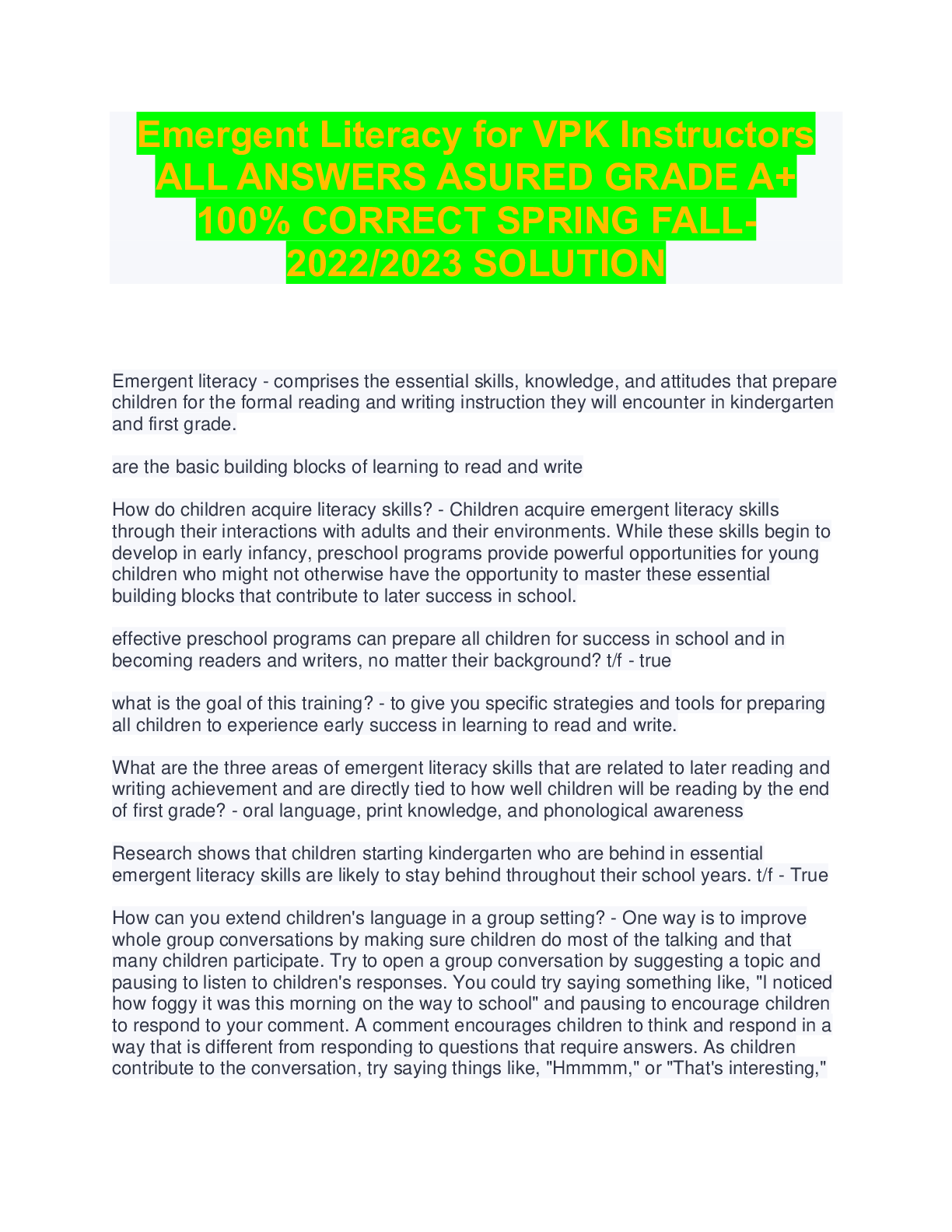
Reviews( 0 )
Document information
Connected school, study & course
About the document
Uploaded On
Sep 05, 2022
Number of pages
21
Written in
Additional information
This document has been written for:
Uploaded
Sep 05, 2022
Downloads
0
Views
113




